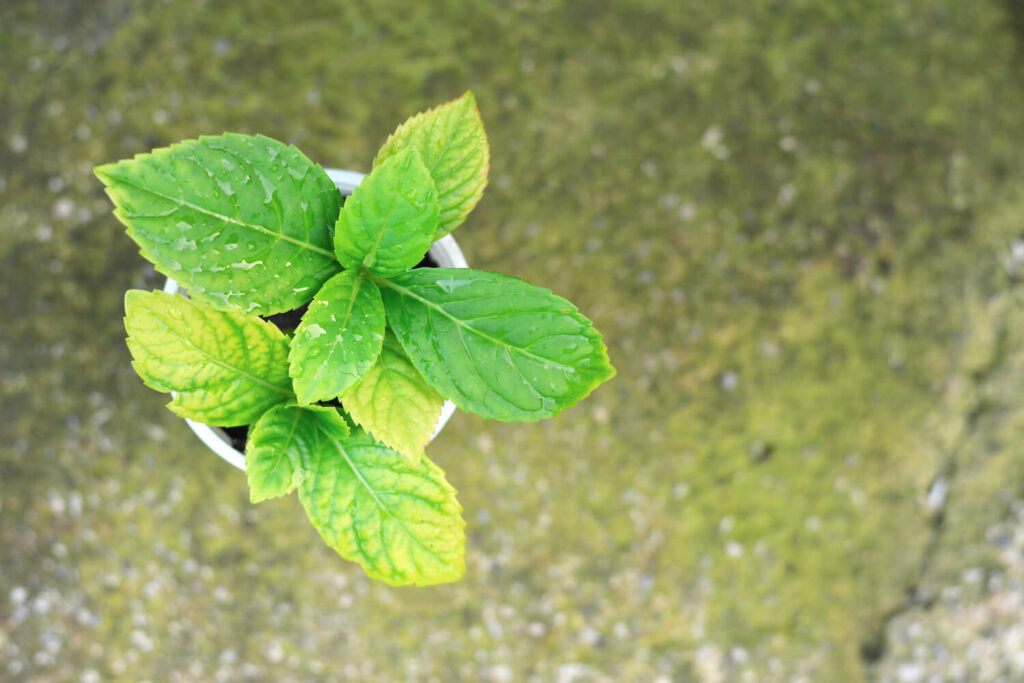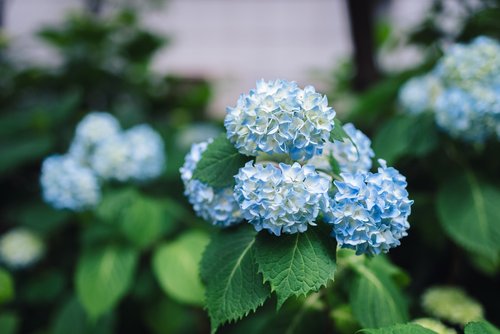The Greatest Guide To Hydrangea Leaves Turning Yellow
Top Guidelines Of Hydrangea Leaves Turning Yellow
Table of ContentsRumored Buzz on Hydrangea Leaves Turning YellowThe Hydrangea Leaves Turning Yellow PDFsHydrangea Leaves Turning Yellow - The FactsHydrangea Leaves Turning Yellow Can Be Fun For Anyone
Huge fallen leaves usually look sagging throughout the mid-day warmth. When they fall short to perk up in the evening or still look wilted in the morning, your plant might be overwatered.Eliminate the plant from the soil and trim out any type of roots that aren't white and swollen (plump). Replant in a brand-new area or function some sand into the dirt for better drain.
Include a bit of distilled water, stir the active ingredients, and drain the additional water. Put a p, H screening strip in and wait for an analysis.
Sphagnum moss or peat moss prevents the soil from compacting and betters soil drainage while also raising the soil's level of acidity. You can spread sulfur chips in your hydrangea dirt.
Everything about Hydrangea Leaves Turning Yellow
This is one great reason to repot houseplants frequently (though there are others, such as origin development as an example). It is likewise why houseplants call for a much stricter fertilizing regular than most outside plants. When a hydrangea houseplant lacks nutrients, its fallen leaves will certainly be the very first to reveal the signs.

You will certainly likewise require to feed the plant manually and routine periods. When springtime starts in March, it's the energetic expanding period for lots of houseplants, including hydrangeas.
The dripline is the location located under the vegetation that is the furthest far from the center of the plant. So as opposed to using feed to the facility of the plant it is best to focus it mainly in the external areas of the pot. If you would certainly instead make use of a slow-release fertilizer such as granular or spike plant food, after that cover either type with some dirt after you insert them.
Hydrangea Leaves Turning Yellow Fundamentals Explained

Although the hydrangea is remarkably frost-resistant, when temperatures begin entering into the 20s, the plant remains in major danger. If the temps remain in the reduced 10s, that danger is more serious still. Undoubtedly this is more of a worry about exterior plants so if you maintain potted hydrangea outside you should bring them indoors in very cold climate conditions or perhaps consider relocating them inside for the duration of the wintertime.

A dehydrated hydrangea, A click here for info big trouble with numerous houseplants is root rot. Root rot occurs when you overwater a plant and since it is such a typical issue (particularly with succulents) lots of houseplant proprietors are frightened of overwatering their plants. Hydrangeas need even more watering that a lot of other typical houseplants and can end up being dehydrated when they are underwatered.
All about Hydrangea Leaves Turning Yellow
They need copious quantities of water, but they also hate to grow in standing water or water soaked soil. Be absolutely certain that your hydrangea is dehydrated because of a lack of water and not as a result of it be offered excessive water (much more on this later). Understand prior to you get hold of that watering can that an overwatered hydrangea shows the exact same signs as an underwatered one! Though overwatering is a serious problem if you stint its water requirements also a little, your hydrangea will be fast to show it.
The very best way to identify if your hydrangea is undersea is to examine the dampness degrees in the soil. By using an efficient however economical moisture and p, H tester, or by sticking your finger right into the soil, you will swiftly tell if the plant needs water. To obtain your hydrangea sprinkling practices on the right track, you need to be mindful concerning the dampness degrees in its dirt.
When you eliminate your finger from damp soil it will have percentages of soil deposit adhered to it. Dry soil will suggest your finger comes out clean or with completely dry dirt that is conveniently surprised. If it's moist, and the plant has yellow leaves then the plant has actually likely been overwatered and you will certainly need to adhere to the advice given up the section listed below.